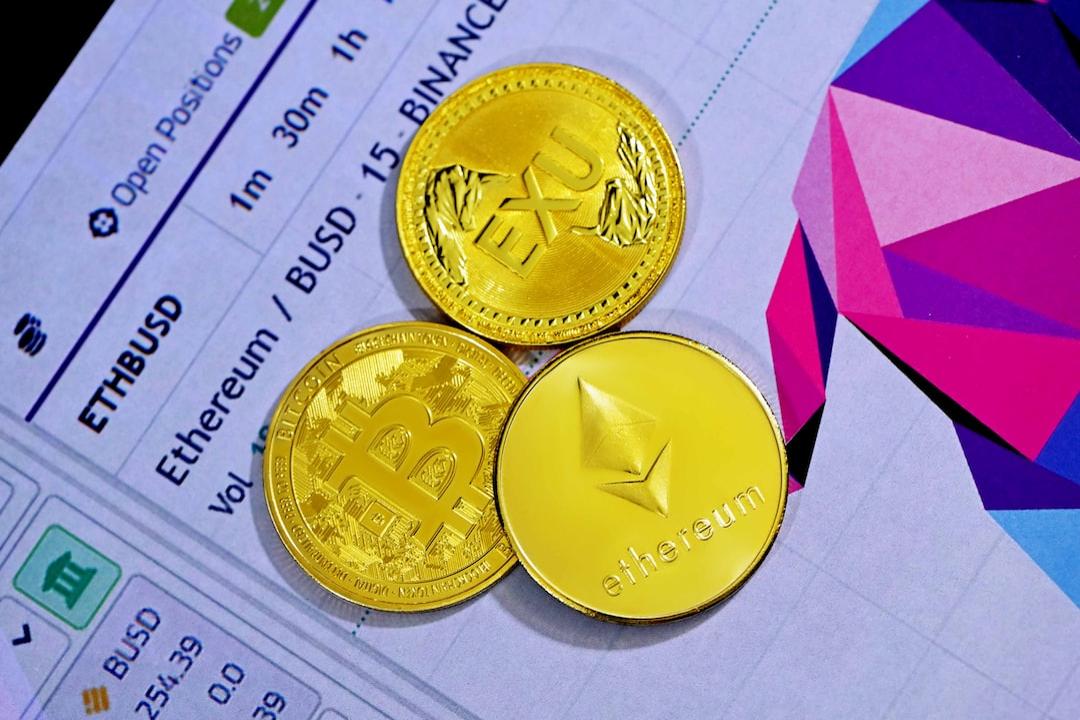
Table of Contents
- Macroeconomic Environment and Capital Sentiment — Cautious Recovery Under Policy Uncertainty
- Cryptocurrency Market Performance — Bitcoin Rising Steadily, Ethereum Facing Pressure
- TOKEN 2049 Dubai 2025 Conference — Stablecoins Leading the Way, Industry Reshaping Future Blueprints
- Market Outlook and Strategic Thinking — Opportunities and Risks in the Transition Period
- About BingX
Macroeconomic Environment and Capital Sentiment — Cautious Recovery Under Policy Uncertainty
Recently, global financial markets have experienced complex changes under the influence of macro policies and political events. The uncertainty caused by President Trump’s tariff policies and the Federal Reserve’s cautious attitude towards interest rate cuts has led to volatility in overall risk assets, but the cryptocurrency market still demonstrates significant resilience and signs of structural recovery. Despite price recovery, most traders and institutions remain cautious, with capital inflows occurring gradually, indicating that the market is exploring a new equilibrium point.
The April US non-farm payroll data showed an increase of 177,000 jobs, surpassing the analyst forecast of 133,000, indicating that the labor market remains healthy. At the same time, the preliminary estimate for the US Q1 GDP showed a decline of 0.3% on an annualized basis, mainly due to increased imports and reduced government spending. The US dollar index weakened, falling 0.16% to 100.0435 on May 2, down more than 8% year-to-date, while gold prices reached $3,240.59 per ounce on May 5, up 23.43% year-to-date, setting a new all-time high.
Against this backdrop, the S&P 500 index rebounded 1.8% this week, with technology stocks showing mixed performance. Nvidia (NVDA) rose 2.59%, Tesla (TSLA) rose 2.38%, Palantir (PLTR) surged 6.95%, while Apple (AAPL) fell 3.74%. This divergence reflects the market’s cautious attitude towards overvalued assets and selective allocation strategies.
Cryptocurrency Market Performance — Bitcoin Rising Steadily, Ethereum Facing Pressure

In this complex macro environment, the cryptocurrency market has shown independent trends and resilience. Bitcoin’s price performed strongly in the past week, rising by 12.82% from April 28 to May 5. On May 2, it briefly surged to $97,436, and by May 4, it had reached $95,967, with 24-hour trading volume at $10.937 billion. This upward trend is supported by technical indicators, and the Fear and Greed Index shows a reading of 65 (Greed), reflecting a clear improvement in market sentiment.
The strong performance of Bitcoin is mainly driven by the continued increase in institutional investment and technical breakthroughs. Bitcoin exchange outflows have significantly increased, indicating that long-term holders are accumulating. According to data from Crypto Quant, outflows resumed rising after a brief lull in early April. Technically, Bitcoin’s price broke through key resistance levels, with the 50-day moving average rising, and the 200-day moving average maintaining an upward trend since the end of April. The Relative Strength Index (RSI) stands at 70.46, supporting a short-term bullish trend.

In contrast to Bitcoin, Ethereum’s performance has been relatively lackluster. As of May 4, the price of Ethereum was $1,841.63, with an overall neutral trend. Technical indicators show that Ethereum’s 50-day simple moving average is $1,827.05, and its 200-day moving average is $2,616.49, with the price within a consolidation range between these two averages. Despite the upcoming Pectra upgrade on May 7, which will bring technical improvements to the Ethereum network, the market’s response has been limited. It is noteworthy that Ethereum’s base layer activity declined in April, collecting only 3.18 ETH in blob fees, with the average gas fee at $0.16, marking the lowest level since 2020.
TOKEN 2049 Dubai 2025 Conference — Stablecoins Leading the Way, Industry Reshaping Future Blueprints
The recently concluded TOKEN 2049 Dubai 2025 conference (from April 30 to May 1) became a focal point for the industry, gathering over 15,000 participants and outlining the future development path of the industry. On the second day of the conference, the focus was on the stablecoin sector. In the “Reshaping Payments with Stablecoins” panel discussion, industry leaders emphasized how stablecoins have evolved from simple trading tools into reliable stores of value and the foundation for market trust. In a bear market, stablecoins like USDT, USDC, and DAI play the role of “stabilizers,” helping to preserve capital and provide stable liquidity during periods of extreme volatility.
On the first day of the conference, product launches highlighted the rapid development in the stablecoin sector: World Liberty Financial announced the integration of its WLF stablecoin USD1 on the TRON network. Zach Witkoff, Executive Vice President and Co-founder, stated plans to mint hundreds of millions of USD1, with the market cap expected to grow into billions of dollars.
Payment infrastructure also saw significant breakthroughs, with Mesh announcing integration with Apple Pay, allowing seamless transactions from cryptocurrency to stablecoins. These moves indicate the trend of stablecoins permeating into daily payment systems. Furthermore, the conference highlighted important development directions such as asset tokenization (RWA), Web3 & AI+ blockchain projects, multi-chain ecosystems, and regulation and compliance. In particular, Zodia Custody’s acquisition of Tungsten Custody Solutions to expand its UAE operations showcased the institutional layout in cryptocurrency financial infrastructure and the trend of crypto companies actively seeking regulatory compliance.
Market Outlook and Strategic Thinking — Opportunities and Risks in the Transition Period
Based on the current cryptocurrency market and the information revealed at the TOKEN 2049 Dubai conference, we are in a transitional period where both opportunities and risks coexist. During this phase, investors and participants need to think more strategically about market trends and asset allocation.
Short-term Market Observations and Focus:
- Will Bitcoin’s strong momentum continue? Although analysts maintain an optimistic outlook for Bitcoin’s short-term trends, expecting the price to continue rising in the coming weeks, whether this optimistic expectation materializes largely depends on US economic indicators and policy changes. The release of US employment data and inflation figures next week will be crucial observation points that could directly affect market sentiment and capital flows.
- Dollar and Gold Trends: The continuous decline of the US dollar index and the new highs in gold prices reflect concerns about the US economic outlook. If this risk-off sentiment continues, it may continue to support the performance of Bitcoin and other crypto assets but could also lead to increased volatility in risk assets.
- Institutional Fund Flows: The inflow of Bitcoin ETF funds is worth close attention, especially the fund flows from institutional products like Fidelity and Bitwise, which will serve as important indicators of shifts in market sentiment. Meanwhile, the continued decline in exchange Bitcoin reserves suggests that long-term holders are still actively accumulating.
Medium-to-long-term Trends and Strategic Thinking:
- Rapid Development of Stablecoin Ecosystem: The core position of stablecoins at the TOKEN 2049 conference suggests that stablecoins are shifting from simple trading media to payment infrastructure and value-preserving tools. As institutions launch innovative stablecoin products and payment solutions, the expansion of the stablecoin ecosystem may become the next driving force for cryptocurrency innovation.
- Acceleration of Asset Tokenization Trend: The tokenization (RWA) of traditional financial assets was another focus of the conference, reflecting the trend of cryptocurrency technology penetrating the real economy. Investors can focus on projects providing infrastructure for asset tokenization and protocols that collaborate with traditional financial institutions.
- Evolution of Regulatory Environment: The shift from restrictive to proactive regulatory guidance may create a more favorable development environment for compliant crypto projects. Institutions like Zodia Custody accelerating their operations in friendly regulatory regions like the UAE demonstrate the importance of compliant infrastructure for institutions.
- AI and Blockchain Integration: This topic received widespread attention at the conference, particularly in practical application areas like healthcare and data analytics. Investors can focus on AI+ blockchain infrastructure projects and solutions tailored to specific industry applications.
- Coexistence and Development of Multi-chain Ecosystems: Based on discussions at the conference, the industry is moving from a competition of single public chains to a multi-chain coexistence model. The specialization and differentiation of various public chains in different application scenarios offer diversification opportunities for investors.
Conclusion: Although the current market has seen a technical recovery, and macro policies have softened, based on on-chain data, capital structures, and industry developments, the market is still in search of a new equilibrium point and clear growth drivers. A real structural recovery will depend on the clarity of the policy environment, sustained institutional capital inflows, and whether industry innovations can be transformed into practical applications and user growth.
In such a market environment, investors should maintain patience and strategic thinking, focusing on substantial technical breakthroughs and user adoption rather than short-term price fluctuations. The innovative directions showcased at the TOKEN 2049 conference, such as stablecoins, asset tokenization, and AI integration, may become the core drivers of the next market cycle, warranting active positioning and long-term attention.
As May enters its second half, the release of US economic data and changes in the global policy environment will provide further clues for the market. Whether institutional or individual investors, seeking certainty in uncertainty and capturing trends in the face of change will be the key to success during this phase.
About BingX
BingX, founded in 2018, is a leading global cryptocurrency exchange, providing a wide range of products and services, including spot trading, derivatives, copy trading, and asset management, to over 10 million users worldwide. In 2024, BingX became the official partner of Premier League powerhouse Chelsea Football Club, showcasing its international brand expansion.
The platform regularly provides mainstream cryptocurrency price predictions, such as Bitcoin price forecasts and Ethereum analysis, catering to users from beginners to professionals. BingX is committed to creating a trusted trading environment, offering innovative tools and features to enhance users’ trading capabilities.
BingX’s official community gathers users from diverse backgrounds, with daily updates on market information, strategy analysis, and practical insights. The community also shares tutorials and useful tools periodically, offering a comprehensive information station for market observation, trading learning, and benefits. BingX Traditional Chinese Official Community
Disclaimer: This article represents BingX’s views and provides market information. All content and views are for reference only and do not constitute investment advice. Investors should make their own decisions and trades. BingX and the author will not bear any responsibility for direct or indirect losses incurred by investors’ trades.
This is official content provided by BingX, and it does not represent the stance or investment advice of this site. Readers are advised to conduct prudent evaluations on their own.
Bitcoin Momentum Slows! Leverage Risks Mount as Market Eyes Key Support at $110,000
On-Chain Analysis Company Glassnode ReportsOn-chain analysis company Glassnode noted in it…
